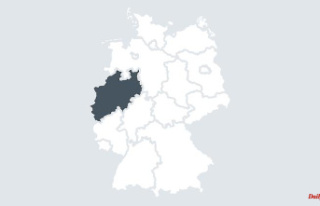Grünberg (dpa/lhe) - To protect the black stork from damage caused by wind turbines, for example, 35 so-called eyrie protection zones have been set up in Hesse. This was announced by the Ministry of the Environment on Wednesday when a contract was signed for a protection zone in the city forest of Grünberg (district of Gießen). These protection zones for black storks are part of the Hessian aid program for species sensitive to wind energy. The state government is thus showing that it is possible "to expand wind energy and at the same time to implement more species protection," said Hesse's Environment Minister Priska Hinz (Greens).
According to the ministry, 72 black stork breeding sites are currently known nationwide. 48 of these are considered protected: In addition to the 35 eyrie protection zones in the state forest and in corporate and private forests, there are 13 eyries of black stork breeding pairs on natural forest development areas where no disruptive interventions by forestry work take place.
The protection zones for the black storks ensure that no changes in the forest stock or disturbances by the forestry operation take place within a radius of 200 meters around the breeding trees, as explained by Martin Hormann, employee in the nature conservation department at the HessenForst state enterprise. This is the most important prerequisite for a successful reproduction of the animals. Hunting operations in the protection zones are also limited to between September and February 15.
In Hesse, two percent of the state area is to be made available primarily for the use of wind energy. Since species such as the black stork, red kite and Bechstein's bat are particularly sensitive to interventions in their habitat, the program was launched at the end of 2020. In this way, protective measures are designed and implemented outside of wind energy priority areas.












